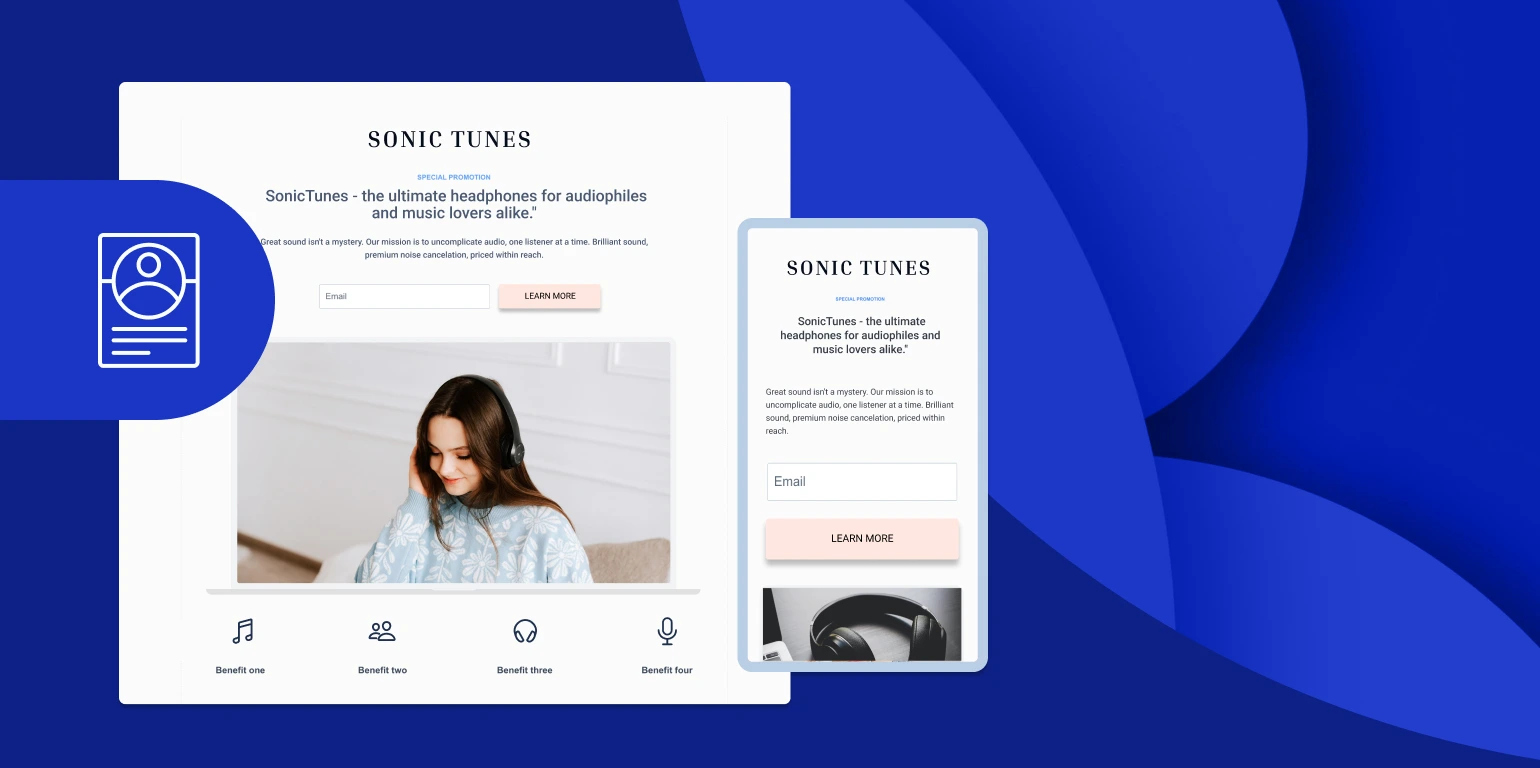Hello!
Fake online reviews might soon be a thing of the past. At the end of June, the Federal Trade Commission (FTC) announced a new rule: Businesses that manipulate online reviews and post dishonest ones could be fined as much as $50,000.
And that’s not just per each proven fake review, it could be as high as every time a consumer reads a fake review – which means that those fines will add up very quickly.
It should go without saying that businesses shouldn’t be posting fake reviews to manipulate their scores or dishonestly trick potential customers.
We hope that nobody reading this blog has to be told that social proof – things like reviews, awards, customer ratings, and other information that proves how your products or services help real people – only works because, well, it’s real.
 However, there’s one nugget of truth here: It can be hard to get your customers and clients to leave reviews and testimonials! It’s not just a question of “how do you get customers to give you good reviews” – that, at least, should come naturally if you have good products or worthy services.
However, there’s one nugget of truth here: It can be hard to get your customers and clients to leave reviews and testimonials! It’s not just a question of “how do you get customers to give you good reviews” – that, at least, should come naturally if you have good products or worthy services.
It’s a question of, on a basic level, how do you get customers to give you testimonials and reviews at all? Learning how to get customer testimonials for a landing page is a massive learning curve, especially for a new business.
So, let’s give some people the benefit of the doubt. Perhaps a business isn’t turning to reviews that aren’t 100% above-board not because its owners want to scam people, but because they’re having trouble getting testimonials and reviews for authentic social proof in the first place.
Let’s do that, then. Let’s look at how to get testimonials from clients, how to get customers to leave reviews – and how you can best use those testimonials on landing pages.
 In this blog, we’ll discuss:
In this blog, we’ll discuss:
- The importance of social proof like reviews and awards
- What the best kinds of social proof look like
- The best ways to get testimonials from clients for your landing page or website
- Just what constitutes a “fake review,” anyway – can your employees leave reviews? (FTC says: Maybe! More on that later)
Why Are Customer Reviews and Client Testimonials Important?
Why do you need social proof, anyway? You’ve got a great product or service, and your website or landing page explains the many ways in which it can help solve the problems people might be having that you designed it to address. Shouldn’t that be enough?
Well, no. Of course not! After all, you know what you’re selling is the real deal, and we know what you’re selling is the real deal… but the customers don’t know that.
“Caveat Emptor,” or “buyer beware,” is a thing for a reason. For all a would-be customer knows, your product or service is a sham that won’t do half of what you promise. Why should they take your word for it? They shouldn’t, and they won’t.
 That’s why social proof is so important. Good customer reviews and client testimonials aren’t just a fancy number on a page, or an arbitrary bar showing that more people clicked the “5*” option than did the “1*” option.
That’s why social proof is so important. Good customer reviews and client testimonials aren’t just a fancy number on a page, or an arbitrary bar showing that more people clicked the “5*” option than did the “1*” option.
Good customer reviews and client testimonials prove that your product or service helped real people actually solve real problems, just like you said it would.
When a prospective buyer reads a review from a real human being telling the world that they had a problem like the one a buyer faces – and that you fixed it – they’re more likely to consider that your product or service could help them, too. This is why testimonials on landing pages are so important, and why it’s so critical to get good reviews from your customers.
This is why marketers should be glad that the FTC is cracking down on fake reviews. Because if customers and shoppers start thinking that those great reviews you’ve earned and proudly display are fake – if they start losing trust in this social proof – then we’ll have no way to reliably convince them otherwise.
What Are the Best Kinds of Social Proof?
Social proof comes in many shapes and sizes. Client testimonials and quotes on a landing page for a SaaS solution are a kind of social proof, as are reviews and awards from independent experts.
If you sell goods on a site like Amazon, your hard-earned 5* ratings are yet another kind of social proof.
But what is the best kind of social proof? How can you maximize real estate on your website or landing page – and, more importantly, how can you maximize your prospective customer’s time so that they’re able to quickly understand your value proposition?
 When it comes to social proof, marketers have six specific types that are particularly effective:
When it comes to social proof, marketers have six specific types that are particularly effective:
- Numbers – a simple number, like number of satisfied customers or how many people like your Facebook page
- Testimonials – text reviews and customer testimonials. These are what most people think of when they’re trying to get customer reviews for their website or landing page
- Pictures – pictures from customers of your product or service in action
- Metrics – these are also numbers, but a different type of numbers than in the “Sum” category. These are your review scores, your customer retention rate (showing how many buy from you again), or how you stack up against the competition
- Awards – these are awards you might have received from other sites, like Angie’s List or G2
- Signatures – this is last because it’s less of a type of social proof on its own, and more effective when compared with others like “Say.” When a real person is willing to sign their name (and by extension their reputation) onto their review, it proves that they’re willing to stand by what they say, meaning that others will be more likely to trust it.
These metrics are sometimes called the 6 “S”es – Sum, Say, Show, Score, Shine, Sign.
Of course, the best types of social proof, if possible, combine all of these.
 Here’s an example of it in action. Recently, I moved. (I don’t recommend it, if you can avoid it. Moving sucks.) However, to make things slightly less miserable on my end, I hired a moving crew.
Here’s an example of it in action. Recently, I moved. (I don’t recommend it, if you can avoid it. Moving sucks.) However, to make things slightly less miserable on my end, I hired a moving crew.
At the end of the move, when all was said and done and my very heavy bed, dresser, and other furniture were safely in my new home, the movers mentioned that they would get an extra bonus for the job if I took a picture with them in their uniforms and posted it to a positive Google review.
So I did. Instantly, that nailed four of the six S qualifications: Show (I took a photo), Sign (the review had my name attached), Say (I mentioned the two movers by name and how pleased I was with their good work), and Score (I gave them 5 stars). A recipe for great social proof.
How Do You Get Reviews and Testimonials from Customers?
So, you know what makes for a good customer review or testimonial for your website or landing page… but how do you get them?
Getting Customer Testimonials, Tip #1: Ask Them
 Well, as seen above, sometimes you need only ask! When your product or service has helped someone in a way that they’re grateful for, you can always just ask if the happy customer will help you out by writing a review or giving a testimonial.
Well, as seen above, sometimes you need only ask! When your product or service has helped someone in a way that they’re grateful for, you can always just ask if the happy customer will help you out by writing a review or giving a testimonial.
This tends to work better in businesses that are more service-oriented, just because customers and clients may feel personally grateful to the hard work of your employees and want to help them out, specifically.
Let’s be honest: I wasn’t giving this review because I really liked the moving company. That’s not to say I disliked them or wasn’t satisfied; their prices were fair and their scheduling was easy and convenient. But those weren’t the reasons I wrote the review.
The reason I left a review was because I’d seen two young men working hard in the late June heat to get my belongings to my new home safely and efficiently. I was grateful for their work, and wanted them to get the extra bonus, so I left a review.
For service-oriented businesses, customers likely interact with individual employees and may feel grateful for the work they do, so leveraging that into giving a good review for the business overall can be effective.
Warning: If not done right, this can come off as creepy and exploitative. You should never make your employees’ fair compensation dependent on bonuses from good reviews.
 A customer who gets the sense that the employee of yours who they’re interacting with is desperate might want to give the employee a good rating personally, but punish a business that it doesn’t feel is treating the worker fairly.
A customer who gets the sense that the employee of yours who they’re interacting with is desperate might want to give the employee a good rating personally, but punish a business that it doesn’t feel is treating the worker fairly.
If you’re going to financially compensate employees who get good reviews for the business, make sure it’s a bonus in every sense of the word.
Getting Customer Testimonials, Tip #2: Make It Worth Their While
Let’s be honest: Most people are busy. Writing a review, especially a thoughtful one, takes time and effort.
There’s a reason that it’s common for even great establishments to have negative reviews on review sites – because people who were happy and satisfied won’t give things a second thought, while those who weren’t satisfied will be unhappy and want to register that unhappiness.
So why not make getting a customer to leave a review worth their while?
You can incentivize reviews and get clients to leave reviews and testimonials by rewarding people who leave them with goodies, discounts, and more. If you’re a restaurant, you can give coupons for $10 off their next meal if they leave an online review.
 Ecommerce shops can offer a one-time discount on applicable purchases for reviewing both items and the site itself. If you have a SaaS business, you can take a bit off the next month’s fees, and so on.
Ecommerce shops can offer a one-time discount on applicable purchases for reviewing both items and the site itself. If you have a SaaS business, you can take a bit off the next month’s fees, and so on.
It’s important to make sure that these incentives make sense. If you’re a store that sells mattresses, for instance, it doesn’t make a lot of logical sense to offer discounts on your next purchase for someone who bought a mattress with you. How many mattresses do they plan on buying, right?
Instead, you could work with another local store to do a cross-promotion where they get a discount on accessories like mattress straps or bed sheets.
Always be sure that you’re not breaking the bank here, but try to have a non-negligible discount, if you can. “$10 off if you leave a review” is quite nice if you’re selling a $50 dinner; it’s much less appealing if it’s a discount on a $1,000 monthly SaaS bill.
Warning: It’s important to stress that you want honest reviews, not just positive ones. Paying people for positive reviews is exactly the sort of thing that the FTC wants to avoid. As long as you are just offering an incentive for someone to go leave their thoughts – no matter what their thoughts are, positive or critical – then you’re good.
 After all, negative reviews can be just as valuable to a business in the long run, because they might point out issues with your products or services you haven’t noticed yet, letting you fix them for the future.
After all, negative reviews can be just as valuable to a business in the long run, because they might point out issues with your products or services you haven’t noticed yet, letting you fix them for the future.
Getting Customer Testimonials, Tip #3: Conduct Satisfaction Interviews With Your Best Clients
This might not be its own unique strategy when it comes to getting customer and client reviews for your landing page or website, but it’s a very good thing to keep in mind.
If all you’re sending is “fire and forget” requests for reviews, you might get begrudging ones that aren’t super enthusiastic about your product or service – so you need to find the people who are.
Talk to your customers about the things that drove them to seek you out – what were they struggling with? What were their initial misgivings about your product, what made them convert despite those concerns?
What results or solutions did they get from your product or service, and ultimately, how satisfied are they with the result?
 By doing this, you can pick out the quotes they say that would make great reviews or testimonials and turn those into the perfect sort of social proof you want on a landing page.
By doing this, you can pick out the quotes they say that would make great reviews or testimonials and turn those into the perfect sort of social proof you want on a landing page.
This is much easier to do if you have a service business with reliable, regular clients – you know who your longest-running, most satisfied clients are, and have the relationship with them to ask. It’s a little harder for product-based businesses that might not have regular touchpoints or moments of contact.
However, “harder” doesn’t mean “impossible” thanks to the magic of modern marketing.
For instance, you could send automated emails when someone’s been subscribed to your new products email for a year or more, or someone who has made regular purchases from your store. From here, you can ask them, or you can make it worth their while if they’ll sit down with you for a satisfaction interview so you can get all the great quotes you want.
What Defines a Fake Review, Anyway?
 Let’s revisit the news article that originally started this blog post. Obviously, there is the typical “fake review” that probably comes to mind when you think of the term – a desperate marketing team paying a shady business to have fake profiles write glowing reviews of items or services they’ve never used themselves, That’s definitely one type of fake review.
Let’s revisit the news article that originally started this blog post. Obviously, there is the typical “fake review” that probably comes to mind when you think of the term – a desperate marketing team paying a shady business to have fake profiles write glowing reviews of items or services they’ve never used themselves, That’s definitely one type of fake review.
But anything that could make a review dishonest might count under this category, even ones that might seem more benign at first glance.
For instance, we mentioned earlier that it’s no bueno if you only give financial incentives for people to leave good reviews, not just any review – because then you’re paying people for good reviews, which is the root of the problem.
According to the Washington Post, “[asking customers to leave a review is] still allowed because it’s a critical tool for small businesses to build an online reputation. The rules also don’t specifically forbid giving legitimate customers a gift card for leaving a review, so long as they’re not required to express a particular opinion — though it’s a good idea to disclose that if it’s a significant amount of money.”
 Businesses also can’t:
Businesses also can’t:
- Ask insiders (like employees or contractors who aren’t customers) to leave reviews without disclosure of the fact. If you have an employee who went through the “I’m not just the president, I’m also a client” transition, they can leave a review, they just have to disclose the relationship
- “Hijack” reviews by swapping in a new product to an existing product listing page. This one was already illegal, and the FTC fined a business $600,000 for doing just that, but now it’s explicitly against the rules
- Claim to be an independent review site while also being a sales site. If you’re selling your own products or services on your site, you’re not an independent reviewer.
- Suppress negative reviews. We know – you don’t feel like that negative review you got was fair or reasonable. However, them’s the breaks of online reviews, and every business gets them. You can’t threaten legal action or intimidation against negative reviews. Some review sites do let you respond or push back against negative reviews, but others don’t.
 And, at the end of the day, as we already mentioned, you should think of negative reviews as a learning experience. Some unhappy customers are just unpleasable, but others might make valid points – so why not take that feedback to try and learn more about how you can improve your offering?
And, at the end of the day, as we already mentioned, you should think of negative reviews as a learning experience. Some unhappy customers are just unpleasable, but others might make valid points – so why not take that feedback to try and learn more about how you can improve your offering?
You can review the FTC’s guidelines for dealing with fake reviews, which are taking comment for 2 months before going into effect, so you know what borderline activities are okay, especially for small businesses, and which aren’t.
Fake reviews are a problem for all marketers. Hopefully, this blog helped you learn some great tactics for getting real reviews from satisfied customers.
Also read:
- 5 Key Practices To Move Deeper Into The Cloud Continuum
- How to Hire Remotely in The Post Covid Era
- 5 Industries That Have Tremendously Changed as a Result of Technology
Thank you!
Join us on social media!
See you!






